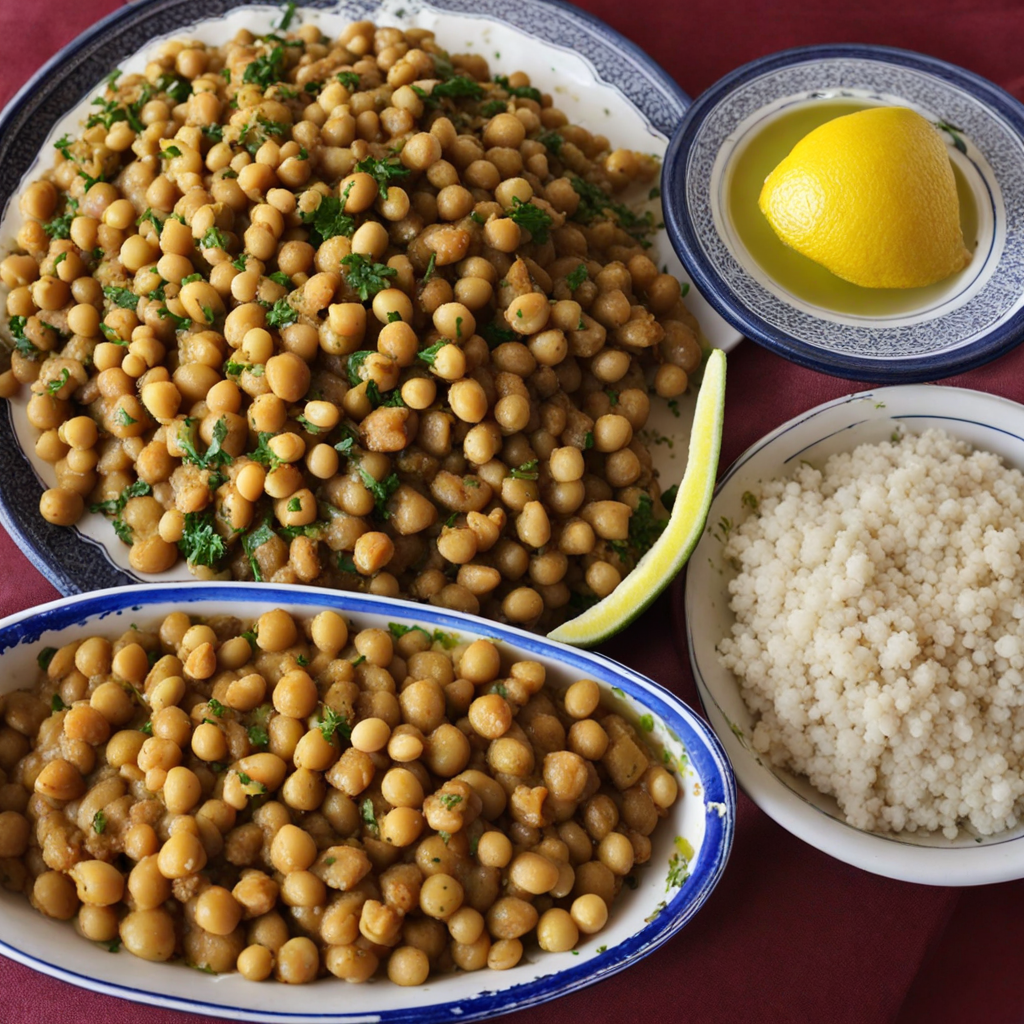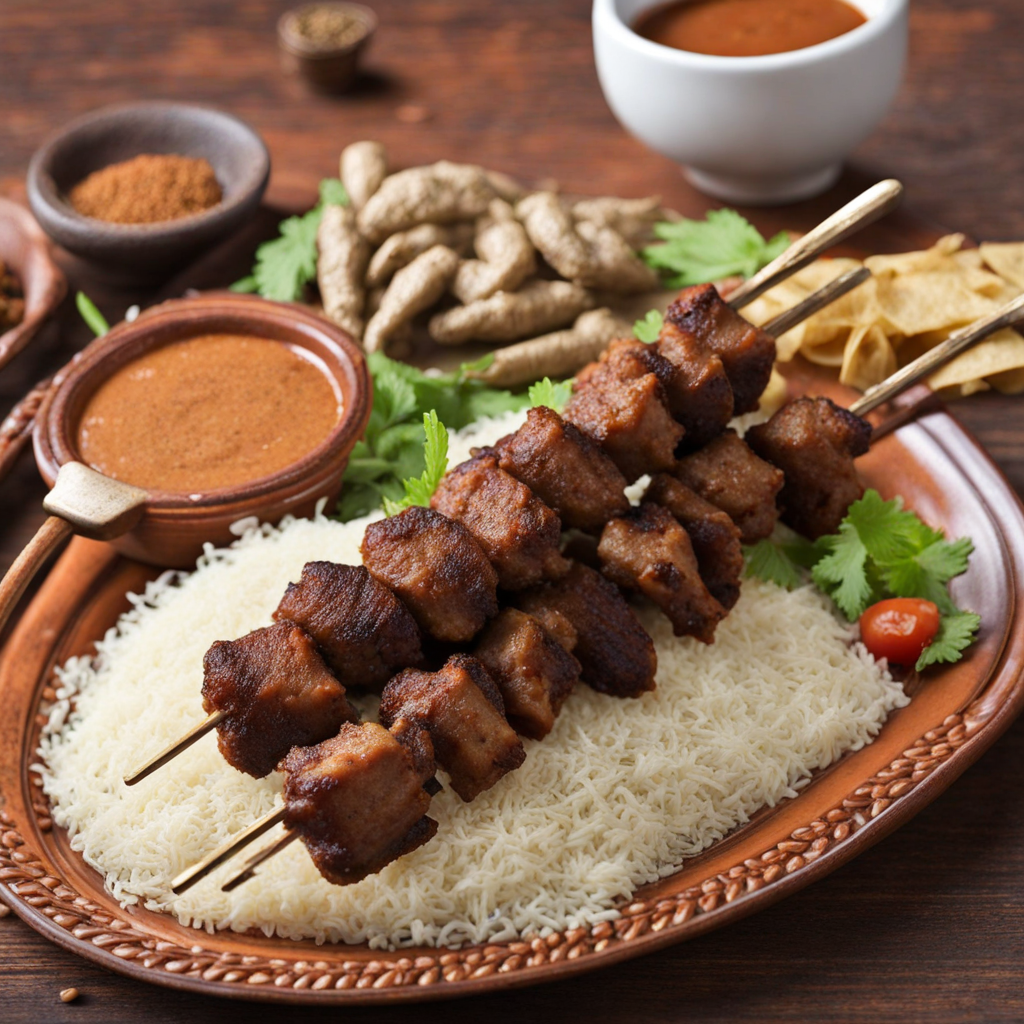Omaj
Omaj is a traditional Sudanese dish that beautifully embodies the rich culinary heritage of the region. Made primarily from fava beans, the dish is often seasoned with a blend of spices that may include cumin, coriander, and garlic, creating a taste profile that is both earthy and aromatic. The beans are typically cooked until soft and then mashed or blended to achieve a creamy texture. This base can be enhanced with the addition of fresh herbs like cilantro or parsley, offering a burst of freshness that complements the savory notes of the dish. Served as a hearty accompaniment to various meals, Omaj can be enjoyed with flatbreads such as kisra or served alongside grilled meats and stews. The dish is not just a staple but also a symbol of Sudanese hospitality, often prepared for family gatherings and special occasions. Its versatility allows for variations depending on local ingredients and personal preferences, making it a beloved comfort food throughout the country. What truly sets Omaj apart is its ability to connect people through shared meals, reflecting the communal aspect of Sudanese culture. Each bite offers a taste of the country's rich agricultural bounty, reminding diners of the deep roots of tradition and the warmth of Sudanese hospitality. For anyone looking to explore new flavors, Omaj presents a delightful opportunity to experience the unique and vibrant taste of Sudan.
How It Became This Dish
The History of عماج (Amag): A Culinary Tradition from Sudan Origin and Ingredients عماج, pronounced as 'Amag', is a traditional Sudanese dish that embodies the rich culinary heritage of the Sudanese people. Primarily made from a base of flour, usually wheat or sorghum, mixed with water and salt, Amag is a type of unleavened bread that is cooked on a flat surface, typically referred to as a 'taboon' or 'saj'. The name "Amag" itself is derived from the Arabic root which relates to the concept of mixing and kneading, reflecting the preparation method involved. The origins of Amag can be traced back to the ancient civilizations that flourished in the Nile Valley, where grain cultivation began thousands of years ago. The fertile lands along the Nile provided an ideal environment for growing various grains, laying the foundation for staple foods in Sudanese cuisine. As Sudanese society evolved through the ages, so too did their culinary practices, with Amag becoming a significant part of the daily diet. Cultural Significance Culturally, Amag holds a special place in Sudanese households, transcending mere sustenance to symbolize community and hospitality. It is often served during family gatherings, celebrations, and religious occasions, reinforcing social bonds among families and friends. The act of preparing Amag is a communal affair in many households, often involving multiple generations of women who gather to knead the dough, shape the bread, and share stories and laughter. The bread itself is versatile, often accompanying a variety of dishes, from savory stews to spicy sauces. In Sudan, it is customary to use Amag as a utensil, tearing off pieces to scoop up food. This practice not only enhances the communal dining experience but also deepens the connection between food and identity, as sharing a meal is a cherished tradition in Sudanese culture. Development Over Time As Sudan has undergone political, social, and economic changes, so too has the preparation and consumption of Amag. Historically, this bread was made using traditional methods, with families relying on local grains and communal cooking practices. As urbanization increased and lifestyles became busier, the methods of preparation began to evolve. In modern Sudan, while many still adhere to traditional recipes, there has been a noticeable shift towards convenience. Pre-packaged mixes and instant flour products have started to emerge in urban markets, allowing for quicker preparation and catering to the fast-paced lives of city dwellers. However, despite these changes, many Sudanese still cherish the traditional methods and continue to prepare Amag as a way to connect with their heritage. The globalization of food culture has also influenced Amag, as Sudanese expatriates introduce their culinary traditions to new countries. In diaspora communities, Amag becomes a symbol of home, often made during cultural events and gatherings, serving as a reminder of their roots. This migration of culinary practices has led to a fusion of flavors, with Amag sometimes paired with international dishes, reflecting the adaptability of Sudanese cuisine. Regional Variations Amag is not uniform across Sudan; various regions have their own interpretations and methods of preparation. In the northern regions, where wheat is more commonly grown, the bread tends to be lighter and fluffier. Conversely, in southern Sudan, where sorghum is a staple grain, Amag may be denser and have a distinct flavor profile. These regional variations highlight the diverse agricultural practices and cultural influences present in Sudan, contributing to the richness of its culinary landscape. In addition, the method of cooking can vary significantly. While many still use the traditional taboon, which imparts a unique smoky flavor, some households have adapted to using modern ovens, leading to a different texture and taste. Regardless of these adaptations, the essence of Amag as a communal and culturally significant food remains intact. Modern Context and Future of Amag Today, as Sudan grapples with various challenges, including economic hardships and political instability, the role of traditional foods like Amag becomes even more important. Food has the power to bring people together, and in times of crisis, the act of sharing a meal can provide comfort and a sense of normalcy. Furthermore, as interest in traditional and ethnic foods grows globally, there is an opportunity for Amag to gain recognition beyond Sudan's borders. Culinary tourism is on the rise, with travelers seeking authentic food experiences. As Sudanese cuisine garners more attention, Amag could become a culinary ambassador, showcasing the flavors and traditions of Sudan. Local chefs and food enthusiasts are beginning to explore and promote traditional dishes, and there is potential for Amag to emerge as a staple on international menus, enticing food lovers with its unique taste and cultural significance. In conclusion, عماج (Amag) is more than just a type of bread; it is a symbol of Sudan’s rich cultural tapestry, woven from centuries of history, tradition, and communal bonding. As it continues to adapt and evolve, Amag stands as a testament to the resilience and creativity of the Sudanese people, celebrating their culinary heritage while embracing the future. Whether enjoyed in the bustling streets of Khartoum or in diaspora communities around the world, Amag remains a beloved staple, a bridge between the past and the present, and a flavorful emblem of Sudanese identity.
You may like
Discover local flavors from Sudan







